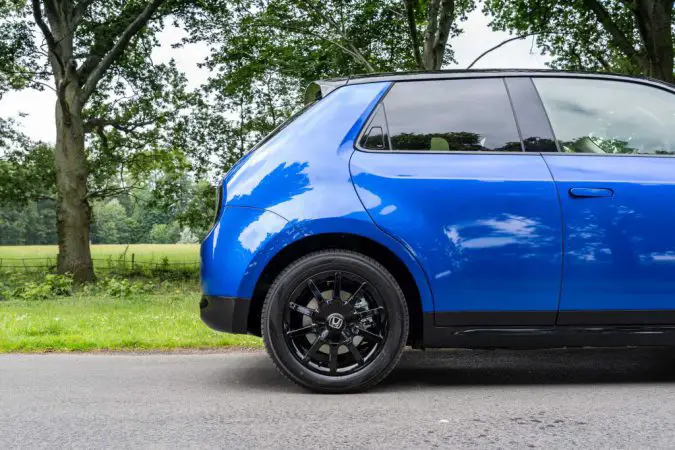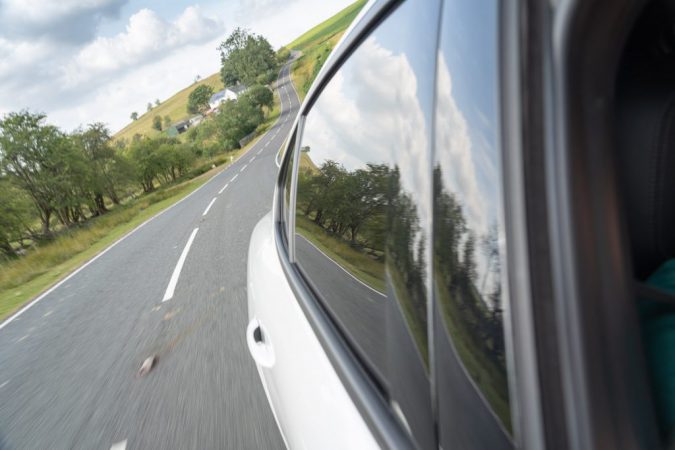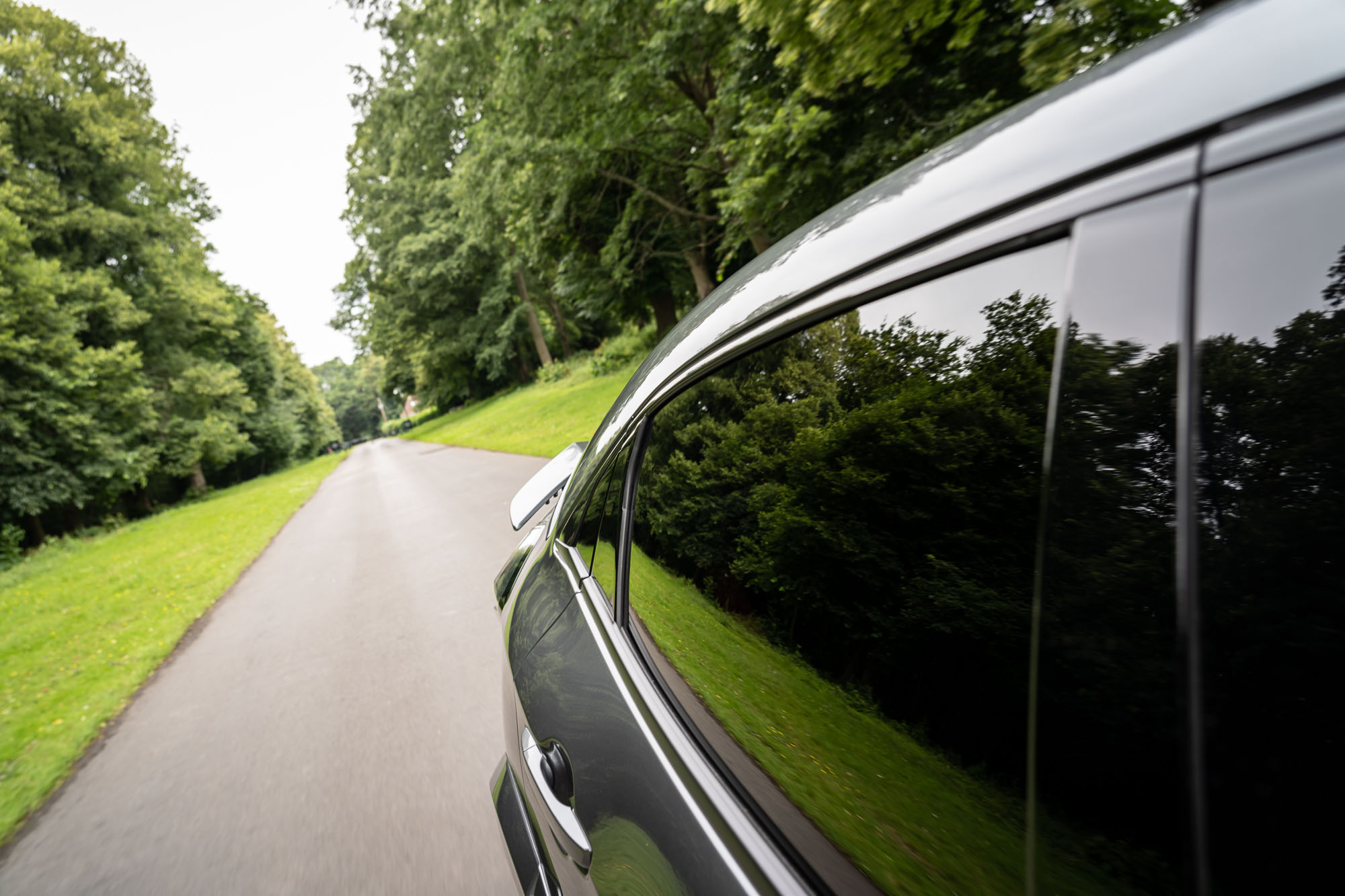Are you looking to replace your car’s old window tint with a lighter or darker shade? Learn how to remove window tint in the safest and most effective method possible. Tinted windows on vehicles are beneficial for a variety of reasons, including increased UV protection, privacy, and aesthetic appeal.
The environment and normal wear and tear, on the other hand, might wear down tint with time. Damage to window tint might appear as bubbles, scratches, or peeling along the margins, which is not only unsightly but also affects its effectiveness as a UV protectant and privacy screen.
Separation of the tint film from the window’s glass can be triggered by extreme temperatures, either hot or cold. It immediately worsens once the break begins, as evidenced by bubbles or peeling.
To avoid a sticky mess, tint removal from your car’s windows is usually done by specialists. Although the process is not as straightforward as quickly removing a sticker, specific approaches have been scientifically validated.
Window Tints: What Are They?
Tints are commonly available in four different types today: dyed, metalized, carbon, and ceramic. Each one has a polyester base, a scratch-resistant covering, and an adhesive to keep it in place on the glass.

Dyed
The most basic is dyed, which is normally used solely for aesthetic considerations. It will, however, provide some privacy and aid in lowering the indoor temperature. While it is the least expensive, it is also the least durable.
Metalized
The next option is metalized, which is similar to dyed but includes metal flakes in the polyester foundation. These not only give the glass a reflective quality, but they also aid in deflecting UV radiation. The latter guard your interior against sun damage such as fading and cracking.
Carbon
Carbon is used instead of metallic flakes in the next stage. While this type of film will not reflect light, it will aid in keeping your interior cool on hot days. This is owing to the fact that it blocks around 40% of the incoming infrared photons.
Ceramic
Then there’s a window tint made of ceramic. Any expert will tell you that this is the best option for the majority of car owners. They use ceramic particles rather than metallic flakes or carbon. These not only filter 99 percent of UV rays, but they also deflect nearly half of the incoming solar heat.
Ceramic window tint is the most expensive of the three alternatives, but it also lasts the longest, about ten years or more. Now that you have a better understanding of how the car is and the many varieties, let’s look at some signs that it’s time to take it off.
Indications To Remove Your Current Window Tint
As previously said, there are numerous advantages to having a window tint installed on your vehicle. These include shielding harmful UV rays from entering the cabin and maintaining a pleasant temperature. In addition to making the sunless stressful on your eyes.

However, as the window tint ages, it is less likely to function well. Here are some indicators to look out for:
Bubbling Or Peeling
As your window tint wears, the first thing you’ll notice is peeling around the borders or bubbles on the surface. Over time, peeling along the margins of your windows will almost surely spread.
Reduced Sun Protection
It’s possible that you have an old window film if you start to notice a lack of sun protection. This implies that not only would the cabin temperature rise faster than if the tint was new, but you’ll also risk UV light damage. This can cause cracking in plastic, vinyl, and leather surfaces.
Discoloration
If your window tint begins to fade and lose color, it will detract from the aesthetics in the same way that peeling or bubbling does. This symptom usually occurs in conjunction with the prior sign of poor UV protection. Surprisingly, when the window tint changes colors, it usually turns purple. The deterioration of the colors used throughout the production process is likely to be to blame.
Darker Than Local Law Permits
While it’s not a “symptom” of aging, it’s certainly a good excuse to get rid of it. You’re usually only allowed to have a coating that suppresses incoming light by 50% on the back and rear windows. For the driver and passenger windows, this is increased to 35 percent.
Most states only allow the top brow (approximately 5-inches) of the front windshield to be tinted, which is usually 35 percent or less. Failure to follow these guidelines will almost certainly result in a ticket of several hundred dollars.
You’re Going To Buy A Car
Some people simply dislike the sight of tinted windows, or the type of tint chosen does not match their personal style. If you’re buying a used car from an individual or a dealership and don’t like the tint, you may always get it removed.
You’re A Vehicle Seller
When it comes to selling a car, you want it to look as good as possible. Old tint can seem shabby and detract from the car’s other characteristics. You remove an eyesore and let the vehicle speak for itself by eliminating the tint.
Prefer A Different Shade Of Tint
The majority of people prefer tinted windows, although the proportion is a personal choice. The difference between 70 percent tint and 27 percent tint, for example, is enormous. You must first remove the existing hue before changing to a new one.
Window Tint That Was Applied Improperly
Window tinting is both a technical and an artistic procedure, as previously stated. If your window tint was placed by a novice or by a professional tint shop that did a poor job, it will need to be removed so you can start over.
How To Remove Window Tint – 5 Simple Methods
You know how to tell when your tint has hit its limit now. Let’s have a look at a few easy solutions as to how to remove window tint.
Method #1 With Heat Removal
What You’ll Require:
- Using a hairdryer or a heat gun
- Cleaner for glass
- Shop towel
- Razor blades
Heating the damaged window tint for easy removal is a simple and inexpensive procedure that uses items you probably already have on hand. However, because it can become a little dirty, so keep towels and a trash can nearby. This task can be done with a heat gun, although most people have a hairdryer.
This method works as well with a heat gun and is a simple way to remove tint or automobile decals. You’ll want to start the process in a corner.
- Hold the hairdryer two inches from the window and blow it on high until the adhesive melts enough for you to push the edge up with your fingertip.
- As the adhesive weakens, angle the dryer, so it strikes where the film and window meet, carefully peeling the film away from the window.
- Rub the glue away using a clean towel. Use your hairdryer to soften it if necessary.
- Wash the car windows with a cleaner after the glue has been removed.
Method #2 Cleaning With Steam
What You’ll Require:
- Portable steam cleaner
- Cleaner for glass
- Razor blade
- Towel
Using a fabric steamer to remove window tint may be the most effective method. After a few minutes of heating the window, the glue will melt, and the tint will easily peel away. One of the best things about this procedure is that it gives you an excuse to clean your car’s upholstery as well. After the tint is removed, all that’s left is a small amount of glue to deal with.
- Fill the fabric steamer with water and start the machine.
- Hold the steam attachment about an inch away from a corner of the window tint you’d like to remove. Hold it in place long enough for your fingernail to remove it from the glass for approximately a minute.
- Maintain the same distance between the steamer and the glass, directing the steam to the point where the tinting film and the glass meet. Peel the tint from your window slowly.
- Spray the entire window with glass cleaner while holding the shop towel in place for around 15-20 seconds. Then wipe it down with a store towel.
If any glue remains, scrape it away with the razor blade, holding it at an angle to avoid damaging the surface.
Here’s a cool video on how to remove window tint off a car with steam:
Method #3 Ammonia And The Sun’s Heat
What You’ll Require:
- Two black trash cans
- Scissors (a pair)
- Spray bottle
- Soapy water
- Cloth for covering or a tarp
- Ammonia cleaning solution
- Respirator mask
- Razor blade
- Steel wool
- Glass cleaner
- A gentle cloth
Removing the tinting from your windows is easier if you reside in a generally sunny location.
Ammonia is one of the safer chemicals to use because it quickly dissolves the sticky adhesive. Here is the step for how to remove window tint with ammonia and sun’s heat:
- Cut two black rubbish bags in the shape of your car window by tracing them. Spray the exterior of the window with soapy water and cover it with one of the black trash bags. Flatten the plastic using your hands.
- Next is to protect all inside surfaces near the window with a tarp or other material that is used to cover your speakers, rear light, and upholstered surfaces.
- Directly spray the ammonia fumes onto the pigments. Ammonia fumes can be dangerous to your health if you are directly exposed to them. Therefore, you should wear a face mask.
- While the window film is still wet, trap the ammonia with another waste bag or plastic wrap. Allow the garbage bags to absorb the heat by placing them in direct sunlight. This will make it easier to remove the film.
- Peel off the film with your fingernails or a razor blade, starting at one corner of the window. Make every effort to peel it off in one piece and avoid breaking it while doing so. Be careful not to damage your windows or cut the defroster lines in the back with the blade.
- Use ammonia and extremely fine steel wool to remove any leftover glue, then clean the surface with a delicate cloth before it dries.
- Remove the garbage bag from the outside of the window and thoroughly clean it with glass cleaner.
Method #4 Soap And Scrape To Remove Window Tint
What You’ll Require:
- Dishwashing liquid
- Glass cleaner
- Warm water
- Towels
- Razor-blade or knife
- Bottle for spraying
- A pot or a bucket
The next method for how to remove window tint is by using soap and scrap. The soap-and-scrape method is a great way to remove small sections of window tint. However, be aware that it is physically demanding work that takes a long time to complete. As a result, I don’t recommend using this procedure on larger windows, such as the windshield or back glass.

- Make a small cut with a knife and raise a corner of the window tint. Grasp the film’s free edge firmly and try to peel it away from the window’s surface. In most situations, the tint will not peel off in one piece, so you’ll have to raise and peel it again until it comes off.
- To soak the adhesive residue, make a soap solution in a basin, fill a spray bottle with it, and spray it over the glass. Then, using a knife, peel off the adhesive.
- Throughout the job, keep spraying the glass to keep the area moist. Finally, clean the window with a glass cleaner and paper towels.
Method #5 Newspaper And Soap
What You’ll Require:
- Dishwashing liquid
- Glass cleaner
- Paper towels
- Newspaper
- Razor-blade or knife
- A basin or a bucket
This procedure is comparable to the soap-and-scrape method, but it involves significantly less effort. It’s also a great way to recycle any old newspapers you might have hanging around, and it doesn’t require any special skills.
- Use a household sponge to thoroughly apply soapy detergent water to the window, then cover it with newspaper as soon as possible.
- Set them aside for an hour. Reapply soap water every 20 minutes as the paper begins to dry to keep the moisture from evaporating.
- Scratch and scrape off the top layer of the tint film in long strokes with a razor blade or your fingernail.
- If the top layer still won’t come off, reapply the soapy water and wait 30 minutes before trying again.
- Gently rub the tint with a surface razor blade until it comes off with no effort.
Getting Rid Of Window Tint Glue
You should wipe glue residue after removing window tint from your windows. You’ll need one of the proven agents to perform it efficiently, such as:
Alcohol
The 91% isopropyl alcohol has the advantage of being highly efficient. Furthermore, removing all glue residue after completely removing window tint is a low-cost solution. To remove minor spots from the cleaned glass, use an old cloth or paper towels. To avoid inhaling the alcohol vapors while working, make sure you’re doing it in a well-ventilated environment.
Nail Polish Remover
When it comes to clearing adhesive residue, you’ll be astonished at how effective nail polish remover can be. When you’ve removed as much window tint as possible, remove the glue with a microfiber cloth and this product.
Goo Gone
After removing the window tint from your car, wipe any leftover tint glue with this well-known glue remover. Regrettably, this chemical is ineffective at removing the tint.
Scrubbing
You can remove adhesive residue with hot, soapy water if you have enough patience and the weather is warm and sunny. Soak the adhesive in water and scrape the ice off the glass using a car ice scraper.
Rear Defrosters/Heating Elements: A Word of Caution
The lines that run across your back window, as well as the little dots around the perimeter, are what we refer to as rear defrosters and heating elements. You can easily damage these if you aren’t careful when removing tint with a razor blade.
Instead, we recommend spraying glass cleaner on it, letting it sit for 15 seconds, and then wiping it clean. If you must use a razor blade, keep it at an acute angle and as close to the area as possible. Instead of moving up or down, move sideways along the defroster lines. A single blunder can ruin its ability to work properly.
What Are Some Other Tips?
It isn’t difficult to remove window tint. You can do it, too, if you have some spare time and the desire. However, there are a few tricks you may use to save time and avoid repeating the same tasks.
- Take it easy at first. The first piece of advice we always give is to take your time. The tint is applied to your window by a professional. You’ll end up shredding it into small pieces if you try to take it off too forcefully in one stroke, making your job much more difficult.
- The defroster and antenna lines should be handled with caution. When working on the back windows with a razor, some people harm their defroster or antenna lines. If you take your time, this will not happen. However, instead of using the razor blade, you can lift the tint with duct tape.
- Use a steamer if possible. They’re not expensive, and you can get one for as little as $15. A steamer not only saves time but also eliminates the need for a razor blade to remove the adhesive from the glass. Something the defrosters and antenna in your car will enjoy!
Window Tint Removal Facts:
- Window tint can be removed if it exceeds the law, if you don’t like the color, or if it has started to bubble or fade.
- Three ways to remove window tint without ruining your windows include using heat, mechanical force, or chemicals.
- The easiest way to remove window tint is to use a steam cleaner or clothing steamer.
- Protection of the interior of the car is important when using a steam cleaner or clothing steamer, including using plastic tarps, old towels, and being careful with hot steam.
- A razor scraper or plastic scraper can be used to cut adhesive and ease removal.
- Window tint adhesive is soluble in ammonia or alcohol, making it possible to use those substances to break down the adhesive bond.
- Personal protective equipment such as safety glasses or goggles, a respirator, and gloves should be worn when using chemicals such as ammonia or alcohol.
- Never use a razor scraper on a rear window defroster grid or antenna grid; use a plastic scraper in these areas.
- Depending on the situation, a combination of methods may be necessary to remove window tint.
- Once the window tint is removed, any remaining adhesive can be removed with #0000 steel wool and warm soapy solution.
How To Remove Window Tint – Frequently Asked Questions?
Here are some popular FAQs:
1. Is It Possible To Remove The Window Tint Yourself?
Ans: Yes, window tinting may be removed at home. Simply follow one of the five approaches outlined in the preceding article. One of the quickest ways to remove tints was to use a cloth steamer.
2. Is It Possible To Harm Windows When Removing Tints?
Ans: When using a sharp razor, you run the risk of damaging the glass. Over the glass, use the blade lightly, not violently. Some folks have scratched their defroster lines and sliced them in the glass. We’re only using the blade to lift the tint’s corners and softly scrape off the glue.
3. What Is The Best Way To Clean Leftover Tint Adhesive?
Ans: You can end up with a patch of glue attached to the glass after you’ve peeled off the tint. You can remove it with anything that will dissolve the adhesive. WD40, Kerosene, Diesel, Ammonia spray, Isopropyl Alcohol, and Goo Gone are just a few examples.
4. Is Window Tint Used On The Inside Or Outside?
Ans: Window tinting is meant to be used on the interior of your windows. If you have tint on the exterior of your windows, it was likely done incorrectly and may be more difficult to remove now that it has been exposed to the weather.
5. Is Window Film Effective In Preventing Glass From Shattering?
Ans: No, window film will not keep your glass from shattering. Window film improves the safety of the glass by helping to hold broken glass shards together due to an intense adhesive. The glass will shatter if it breaks due to an auto accident, a person running into it, or an attempted break-in, but the film will assist keep the glass intact in most cases.
6. Without A Heat Gun, How To Remove Window Tint?
Ans: You can also use a hairdryer with a high heat setting. Just make sure it has enough power to warm the window. The hairdryer isn’t powerful enough if the window isn’t warm to the touch when you’re using it.
Though you can use a steamer, scrape the tint with a razor, or apply an ammonia or soap/water solution to remove the tint, these treatments are messy and time-consuming. Instead, we suggest investing in a heat gun and removing your tint using the simple method.
7. Is It Possible To Remove Window Tint Glue With Rubbing Alcohol?
Ans: Ammonia or alcohol will dissolve the glue on the rear of the window tint. If a clean, new razor blade isn’t cutting it when it comes to removing the glue, immerse it in alcohol to help dissolve it. Isopropyl alcohol (70 percent or 91 percent) should be applied directly to the residual glue.
8. Is Removing Window Tint Expensive?
Ans: Window tint removal for your entire car will often cost between $200 and $400 for professional services. So why not save a little cash and do it yourself?
How To Remove Window Tint – Final Verdict:
Be aware that professional window tint removal costs will vary based on the size of the window. This method, on the other hand, will save you a lot of time and effort. Window tints that are kept in good condition make you comfortable while driving. They not only provide shade and protection, but they also improve the appearance of your vehicle.
Remember that no matter how well-polished your automobile is, it will not appear good if your window tints are old and tatty. Always remember to use the method that is most convenient for you. If only one window needs to be removed, soap and scrape or newspapers should suffice.
Working on multiple windows with ammonia and garbage bags is simple on sunny days, but heat or steam is the way to go if you live in a chilly climate. This article will hopefully help you how to remove window tint.

